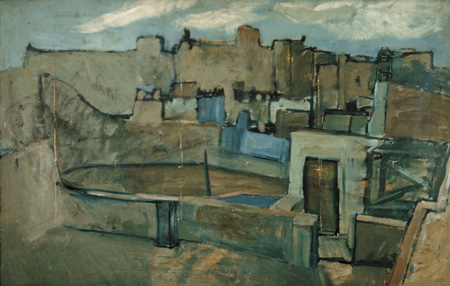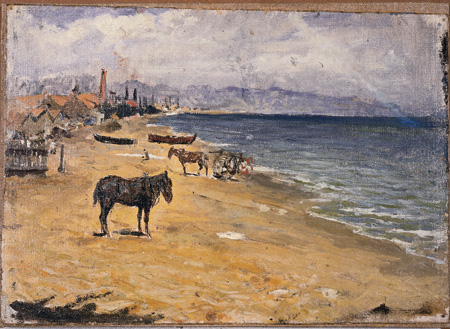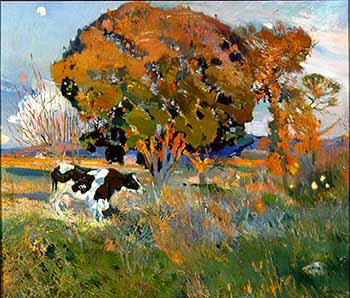Tàpies foundation reopens
March 4th, 2010
The Fundació Antoni Tàpies opened its doors this week after being closed for reforms for several years. More in English

The Fundació Antoni Tàpies opened its doors this week after being closed for reforms for several years. More in English
A community of Chinese immigrants settled in in Barcelona in the 1870s, fleeing, I think, the Opium Wars and turmoil in the Philippines. They lived in extremely poor conditions in the Camp de la Bota where the Forum is sited today . The area was known for some time as the “Barrio de Pekin”. As the years went by, more immigrants were attracted to the area and the shanty town grew. The Chinese were probably assimilated into the city’s population. Many of the shacks were swept away in sea storms in the 1920s, though with the building boom of the 1929 Universal Exposition, more arrived.
See also Camp de la Bota, Barcelona’s killing fields
The above painting, Platja de Pequín (Pequín beach), was painted by Isidre Nonell in 1901. More from Wikipedia
This painting by Ramón Casas is entitled La Carga (The Charge). and shows the Guardia Civil routing a crowd. It was painted in 1899 and gained fame after the general strike in Barcelona in 1902, where similar tactics were employed. The scene is an idealised view of Barcelona. Santa Maria del Mar is clearly visible as are the chimneys of La Canadenca in Parallel.
The work is currently in the Museo Nacional Centro de Arte Reina Sofía in Madrid.
Picasso painted a series of paintings of the roofs of Barcelona in 1902 and 1903. Superficiously, television antennes and satellite dishes aside, the roofs of the old city haven’t changed much. but these bleak and barren views are of another city.



Barceloneta Beach by Pablo Picasso, 1896 – Oil on canvas. Note the factories of Poble Nou and I think La Maquinista in the background. Picasso lived in the city as a young man between 1895 and 1904. It is also striking how bare the Catalan coast painted in the background was. We forget the massive reforestation in Spain since the 1960s as people no longer had to cut down trees for fuel.
 Orange grove (Mallorca)
Orange grove (Mallorca)
Barcelona’s Caixaforum is hosting a new exhibition on Catalan landscape artist and modernist Joaquim Mir (1873-1940). He began his painting career with a group of artists (the so-called Colla del Safrà) who would head for the outskirts of Barcelona to paint in the open air. He then spent some time painting the wild cliffs on of northern Mallorca where he was said to have “gone crazy in a delirium of fusion with nature”. In later years he studied the Costa Brava and Montserrat. His work is full of light and colour, and depicts shadowy forests, black roofs and rugged terrain. He is considered one of the greatest Spanish landscape artists.

The Rock in the Pond
The MNAC (Museu Nacional d’Art de Catalunya) website describes Mir thus:
Joaquim Mir, one of the most advanced, intuitive and personal leading figures of the second generation of Modernista painters, can be considered the most gifted landscape painter of his generation and perhaps even the best representative of modern Catalan painting. After having trained in landscape Realism, in 1899 Mir moved to Majorca, where he began to explore his own personal vision of landscape. His works of this period reflect the exaltation of unrestrained Nature, unreal almost, brimming with bold ranges of colour. Following a fall (fortuitous or otherwise) from a cliff in Majorca, Mir was admitted to the psychiatric hospital in Reus. In 1906 he settled in the Camp de Tarragona region, where he remained until 1910, and painted a series of extraordinary landscapes that crown the phase of work he had commenced in Majorca. In short, colour is the key element in this painter’s artistic language, which virtually verges on abstraction. MNAC

Joaquín Mir i Trenxet: La encina y la vaca /The holm oak and the cow (1915)